#fastnet lighthouse
Explore tagged Tumblr posts
Text









#lighthouse#lighthousecore#moodboard#personal aesthetic blog#lighthouses#the lighthouse keeper#ocean academia#aesthetic blog#aesthetic#lighthouse aesthetic#vintage#fastnet lighthouse#eddystone lighthouses#portland maine lighthouse#tourlitis lighthouse#la vieille lighthouse#aniva lighthouse#lighthouse keeper#nautical#nauticalcore
158 notes
·
View notes
Text
#OTD in 1847 – The passenger ship Stephen Whitney is wrecked on West Calf Island, off the Southern Coast of Ireland.
The Stephen Whitney was a passenger carrying sailing ship which was wrecked on West Calf Island off the southern coast of Ireland on 10 November 1847 with the loss of 92 of the 110 passengers and crew aboard. The disaster results in the construction of the Fastnet Rock lighthouse. The 1034 ton ship left New York on 18 October for Liverpool carrying passengers and a cargo which included corn, raw…
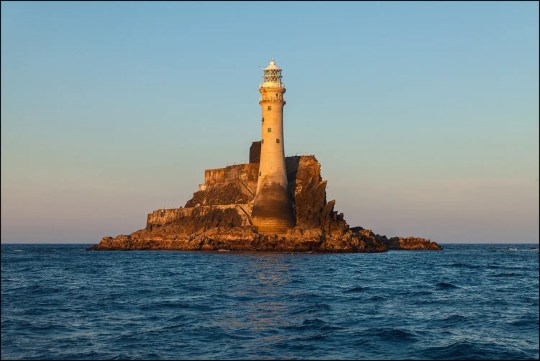
View On WordPress
#Cape Clear Island lighthouse#Crookhaven lighthouse#Fastnet Rock#Ireland#Old Head of Kinsale#Stephen Whitney Shipwreck#West Calf Island
5 notes
·
View notes
Text

Beachy Head Lighthouse, Eastbourne, UK

Cabo Raso Lighthouse, Cascais, Lisbon District, Portugal

Kenosha North Pier Light, near Kenosha, Lake Michigan, Wisconsin

Little Red Lighthouse, Fort Washington Park, Jeffrey’s Hook, Washington Heights, Manhattan, New York City, USA

Þrídrangaviti lighthouse, Westman Islands, Iceland

A frozen lighthouse on Lake Michigan

Lighthouses of Michigan

Walton Lighthouse, CA

La Jument lighthouse

Peggys Point Lighthouse, Nova Scotia, Canada

Fastnet Rock Lighthouse, Ireland
youtube
lighthouse kelly clarkson
youtube
Edison Lighthouse - Love Grows (Top of The Pops, 05/02/1970) [TOTP HD]
10 notes
·
View notes
Text
Mel's Favorite Lighthouses
To say goodbye to TheLightHousesTale url here is some of my favorite lighthouses
(follow @lighthousetale for more lighthouse content in the future)

Old Point Loma Lighthouse - Obviously, I have to represent my hometown on this list. While in operation, the lighthouse had the highest elevation of any lighthouse in the United States. It was too foggy in that location though so they built another lighthouse in 1891 at lower elevation.

Fastnet Lighthouse - The tallest lighthouse in Ireland. I am fond of lighthouses on jagged rocks that look impossible to get to. The best of lighthouse vibes.

Blacksod Lighthouse - Another Irish lighthouse (Ireland has great lighthouses). Weather observations in June 1944 by the Blacksod lighthousekeepers caused the Normandy landings to be postponed because even though Ireland was neutral during the war it provided the British with weather reports. We love lighthouses that helped us beat the Nazis.
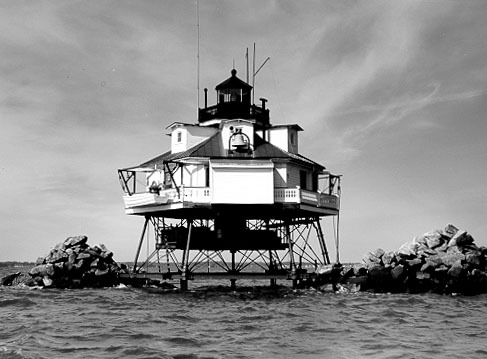
Thomas Point Shoal Light - The most recognized lighthouse in Maryland. It's shaped like a hexagon which is cool.

Sidi Ifni Lighthouse- I don't need to say much about this beauty. It is gorgeous.

Point Lookout Lighthouse - 8,000 Confederates died there during the American Civil War. Love a haunted lighthouse.

St. Simons Lighthouse - Another haunted lighthouse. After an argument the lighthouse assistant shot and killed the lighthouse keeper.

Tourlitis Lighthouse - This just looks like a magical lighthouse from a fairytale. A Disney princess lives there.

Tower of Hercules - lighthouse built by Romans. Myth has it that Hercules buried the head of Geryon underneath the land that lighthouse now stands on.
4 notes
·
View notes
Text
Seashaken Houses by Tom Nancollas: lighting the reefs of the sea
Tom Nancollas, Seashaken Houses: A Lighthouse History from Eddystone to Fastnet. London: Penguin. 2019. (2018.) Blackwell’s affiliate link. Covert art for Seashaken Houses: a drawing of Fastnet Rock lighthouse with a wave breaking halfway up the lighthouse’s sides. (Illustration by Chris Wormell.) Seashaken Houses is part history, part meditation on the difficulties and ambitions inherent in…
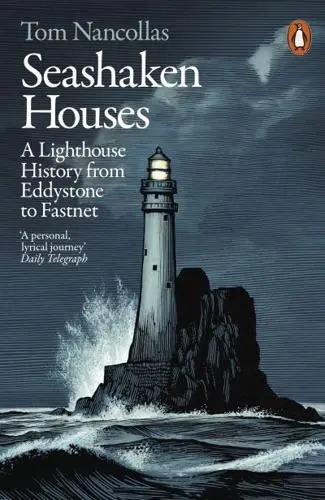
View On WordPress
4 notes
·
View notes
Text
Wednesday, April 30 - Mizen Head Peninsula

Altar wedge tomb

Sheep lying down

Three castles on our "three castle hike"


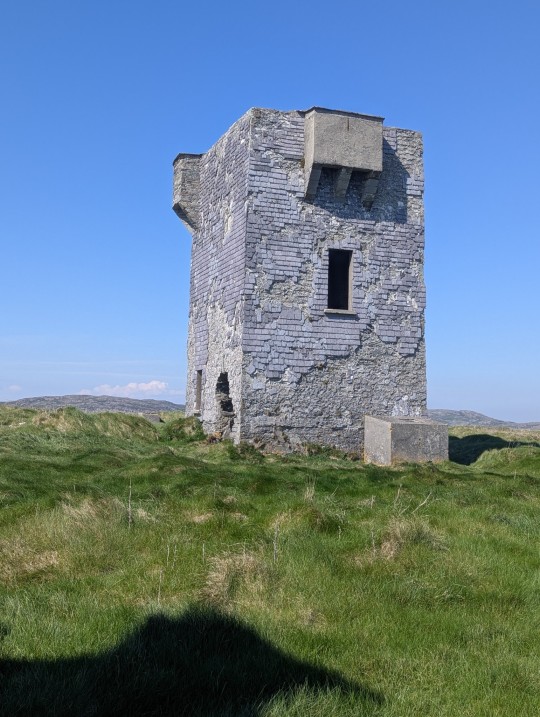
Napoleonic Era Signal Tower

A stout taking the place of Fastnet Lighthouse


Lighthouse and towers seen from Crookhaven

Late afternoon sun in front of Sea View Lodge
Today was our day to explore the Mizen Head Peninsula in the far southwest corner of Ireland. The actual Mizen Head itself has become sort of a tourist thing, with a little visitor center, cafe, gift shop, playground, etc., so we decided to avoid it and do a hike called the Three Castles loop. It was a little further north, and while we didn't have it completely to ourselves, it offered not only a nice hike, but an interesting castle built on a lake. The three castles is a bit of a misnomer, though, as it was originally one castle with three towers, but the setting by the little lake is breathtaking and was also very windy. We had seen on some hiking web sites that there was a continuation of another loop of trail that went out from the other side of the castle over to some viewpoints, and so we continued on. The problem quickly arose that the trails that had been mapped didn't really match up with what appeared to be sheep trails all over the hills, and every time we thought we were back on the path, it went off in a different direction.
So we wandered around a bit, working on finding solid footing in the deep grass and rocky ground, and finally decided to go back another way. We followed a path down by the lake that then was cliffed out, so scrambled up, only to find a cliff path that abruptly ended, and so up some more until we found a way back down. Whatever trails the earlier hikers had followed had completely changed, mostly due to disuse. Everyone else we saw on the main part of the trail only went as far as the castle and then turned around. The lack of trails may be because this is actually on private land that has been opened to hikers (small fee to use the "parking lot"), so the trail marking is not like municipal or county trails. Also, most people are really only interested in the "thing", which is the ruin. The sheep in the photo where they were all lying down is at the start of the hike - they had their backs to the wind and looked like wooly fluff balls.
We did manage to get back to the car after our little ramble, and undaunted, decided to find another hike, this time on Brow Head, just south of Mizen Head. We hadn't realized until we got there that Brow Head was instrumental in Marconi's development of wireless transmission. Russ and I both recently read "Thunderstruck", Erik Larsen's book about Marconi and the advent of wireless transmission, so it was fun to connect the dots, especially since we have been to the place in Nova Scotia on the other end. Nothing is left of the station or the aerial mast but four concrete foundation blocks, as it was destroyed by Irish irregulars in 1922 during the war for independence, possibly because it was used to communicate with the British station in Berehavem, next to Castletownbere. There's so much history in this area, and we've just scratched the surface.
We had read that one could hike out the length of the Head, but were advised against driving up the road to the beginning of the trail as it was very narrow and there were no pull outs. We parked at the little beach below and walked the road, but when we got to the "trail", it was on private land, the gate was locked and barbed wire had been stretched across the stile. So, instead, we walked the short section to another Napoleonic Era Signal Tower, this one clad in slate shingles. Here there were also ruins of what could have been Marconi's buildings, and we did find the concrete foundation blocks. And at least we got our exercise by walking up the road, since we couldn't do the several more kilometers out to the end.
We did drive through the little town of Crookhaven, where Marconi's offices were - near to Brow Head, and were able to see across a small bay to another small lighthouse. While we were up on Brow Head we had seen a sort of smudge on the horizon out from land, and with binoculars we were able to discern it was the Fastnet Lighthouse, one of the most famous. It's situated on a small rock 13 km off the coast, and stands 177 feet. There are lots of videos that show the rock base itself almost disappearing in the waves when the swells are up - today it didn't look bad at all. Fastnet Rock is considered to be the most southerly point in Ireland, hence the pun on the most southerly pint on the side of the bar in Crookhaven.
We made one last stop, and that was to the well-known Altar "wedge tomb" on the south shore of the Peninsula. This was built between 3,000 and 2,000 BCE. Burnt human bone found during excavation was radiocarbon dated to around 2,000 BCE, but it is thought the site was ritually used until the arrival of Christianity. The name "altar" comes from its use as an altar for mass during the 18th century when priests were prohibited by law from saying mass in a church.
Because it is light so late in the evening, we still had time to sit outside of our little lodge and have our wine and cheese in the sun at the end of our day. It was surprisingly warm today - around 70 degrees - and sunny, so it was definitely a change from just a week ago. We may be fortunate as the predicted rain for tomorrow has been downgraded to just a slight chance.
We are leaving the western peninsulas behind tomorrow and heading east along the Southern coast to a place called Kinsale tomorrow night. We've got some stops planned along the way, but Kinsale itself has a lot of history, and is also supposed to be a fun, colorful place.
0 notes
Text
Boredom and Terror
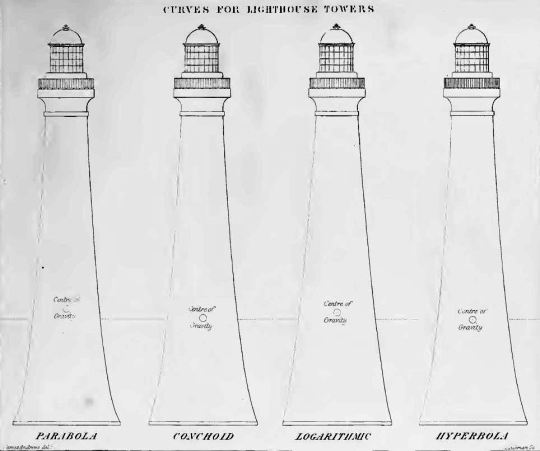
In his account of the construction of the Skerryvore lighthouse, Alan Stevenson includes a diagram comparing four options for the curve of the tower. Like most lighthouses, the tower was to be a solid of revolution, narrower at the top than at the bottom (a "conical frustum"). The possibility of the tower being knocked over, or, in the language of the time, overset, by the waves was a central concern. The four parametric curves investigated by Stevenson were the the parabola, the conchoid, the logarithmic and the hyperbola. In the diagram, the four curves are barely distinguishable. In an accompanying table Stevenson recorded the height, G, of the centre of gravity of each of the four towers and the volume, M, of stone required to build a solid tower of that shape. He wrote that he considered the "economic advantage" of each tower to be inversely proportional to the product of G and M. Based on the result of this calculation, he chose a hyperbolic profile for Skerryvore.
In Stevenson's day, civil engineering was a matter of tacit knowledge as much as rigorous theory. His use of mathematics wasn't empirical, and could be described as aspirational: a mathematically perfect construction would be perpetually sound. His father, Robert Stevenson, had deployed a cycloidal curve in sea walls and in the base of the Bell Rock lighthouse. The rationale there was that the cycloid is the brachistochrone – the curve down which an object will slide or roll most quickly. Thus, according to Robert Stevenson's argument, waves washing against a cycloid would subside as quickly as possible.

Some later wave-washed lighthouses used curves that had not been considered by the Stevensons. Wolf Rock (1869), the fourth Eddystone lighthouse (1881) and the Fastnet lighthouse (1904) all have an elliptical profile, while a few other towers have straight conical sides.
Curves are tangible things. An more abstract argument was presented by John Smeaton for the soundness of his third Eddystone lighthouse (the third). He deployed mathematical induction to claim that a stone tower could not be overset by the sea:
WHILE I am upon this part of my subject, I will take an opportunity of observing that it was a part of my problem, which I will not take upon me to say that I have accurately solved; but I have endeavoured to do it, so far as my feelings, rather than calculations, would bear me out: That the building should be a column of equal strength, proportionate in every part to the stress it was likely to bear (regard being also had to its use,) was a view of the subject I was naturally and forcibly led to, as I found it eternally rung in my ears from all quarters, that a Building of Stone upon the Edystone would certainly be overset. I therefore endeavoured to form it, and put it together so, that while a similarity of use permitted a similar construction, no man should be able to tell me at what joint it would overset; for, if at any given height the uppermost course was, when completed, safe, it became more safe by another course being laid upon it; and that upper course, though somewhat less in weight, and in the total cohesion of its parts, than the former; yet every course, from the first foundation, was less and less subject to the heavy stroke of the sea. (A narrative of the building and a description of the construction of the Edystone Lighthouse with stone, 1791)
Like Robert Stevenson, Smeaton did not name the mathematical principle to which he was appealing. His argument is based on discrete logic, and appears to neglect the fact that waves striking the tower higher up have a larger lever arm with respect to the base. As the height and leverage increases, the "stroke of the sea" would diminish, but at what rate? Smeaton's claim is framed as a indisputable inductive proof ("no man should be able to tell me at what joint it would overset"). It is dry and appeals to the tedious reliability of mathematical reasoning.
Such a proof would presumably have been reassuring, even if it was flawed. The occupants of a wave-washed lighthouse had no choice but to put their faith in the engineering and construction of the tower, in its sheer unyielding truth. In a storm, no action on their part, however vigorous, could help them. It must have been an experience of impotence and confinement, terrifying, but eventually boring as well.
0 notes
Text
Events 11.10 (before 1950)
474 – Emperor Leo II dies after a reign of ten months. He is succeeded by his father Zeno, who becomes sole ruler of the Byzantine Empire. 937 – Ten Kingdoms: Li Bian usurps the throne and deposes Emperor Yang Pu. The Wu State is replaced by Li (now called "Xu Zhigao"), who becomes the first ruler of Southern Tang. 1202 – Fourth Crusade: Despite letters from Pope Innocent III forbidding it and threatening excommunication, Catholic crusaders begin a siege of Zara (now Zadar, Croatia). 1293 – Raden Wijaya is crowned as the first monarch of Majapahit kingdom of Java, taking the throne name Kertarajasa Jayawardhana. 1444 – Battle of Varna: The crusading forces of King Władysław III of Poland (aka Ulaszlo I of Hungary and Władysław III of Varna) are defeated by the Turks under Sultan Murad II and Władysław is killed. 1599 – Åbo Bloodbath: Fourteen noblemen who opposed Duke Charles are decapitated in the Old Great Square of Turku (Swedish: Åbo) for their involvement in the War against Sigismund. 1659 – Chattrapati Shivaji Maharaj, Maratha King kills Afzal Khan, Adilshahi in the battle popularly known as Battle of Pratapgarh. 1674 – Third Anglo-Dutch War: As provided in the Treaty of Westminster, Netherlands cedes New Netherland to England. 1702 – English colonists under the command of James Moore besiege Spanish St. Augustine during Queen Anne's War. 1766 – The last colonial governor of New Jersey, William Franklin, signs the charter of Queen's College (later renamed Rutgers University). 1775 – The United States Marine Corps is founded at Tun Tavern in Philadelphia by Samuel Nicholas. 1793 – A Goddess of Reason is proclaimed by the French Convention at the suggestion of Pierre Gaspard Chaumette. 1821 – Cry of Independence by Rufina Alfaro at La Villa de Los Santos, Panama setting into motion a revolt which led to Panama's independence from Spain and to it immediately becoming part of Colombia. 1847 – The passenger ship Stephen Whitney is wrecked in thick fog off the southern coast of Ireland, killing 92 of the 110 on board. The disaster results in the construction of the Fastnet Rock lighthouse. 1865 – Major Henry Wirz, the superintendent of a prison camp in Andersonville, Georgia, is hanged, becoming one of only three American Civil War soldiers executed for war crimes. 1871 – Henry Morton Stanley locates missing explorer and missionary, David Livingstone in Ujiji, near Lake Tanganyika, famously greeting him with the words, "Dr. Livingstone, I presume?" 1898 – Beginning of the Wilmington insurrection of 1898, the only instance of a municipal government being overthrown in United States history. 1910 – The date of Thomas A. Davis' opening of the San Diego Army and Navy Academy, although the official founding date is November 23, 1910. 1918 – The Western Union Cable Office in North Sydney, Nova Scotia, receives a top-secret coded message from Europe (that would be sent to Ottawa and Washington, D.C.) that said on November 11, 1918, all fighting would cease on land, sea and in the air. 1939 – Finnish author F. E. Sillanpää is awarded the Nobel Prize in Literature. 1940 – The 1940 Vrancea earthquake strikes Romania killing an estimated 1,000 and injuring approximately 4,000 more. 1942 – World War II: Germany invades Vichy France following French Admiral François Darlan's agreement to an armistice with the Allies in North Africa. 1944 – The ammunition ship USS Mount Hood explodes at Seeadler Harbour, Manus, Admiralty Islands, killing at least 432 and wounding 371. 1945 – Heavy fighting in Surabaya between Indonesian nationalists and returning colonialists after World War II, today celebrated as Heroes' Day (Hari Pahlawan). 1946 – A magnitude 6.9 earthquake in the Peruvian Andes mountains kills at least 1,400 people.
0 notes
Text
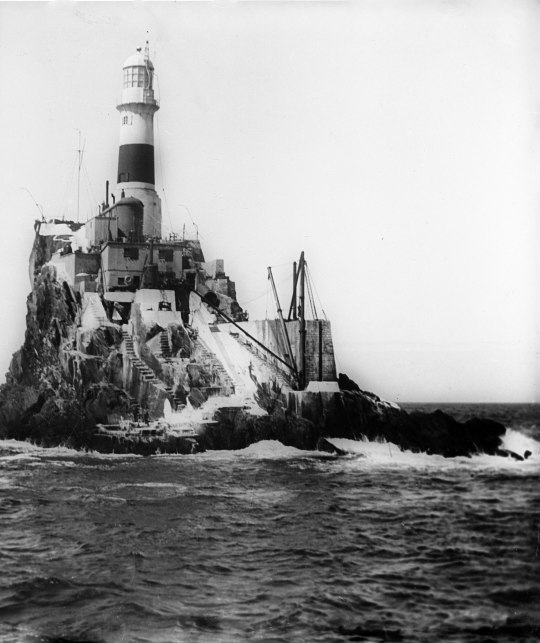
Fastnet Lighthouse
Fastnet Lighthouse is a 54m high lighthouse situated on the remote Fastnet Rock in the Atlantic Ocean. It is the most southerly point of Ireland and lies 6.5 kilometres (4.0 mi) southwest of Cape Clear Island and 13 kilometres (8.1 mi) from County Cork on the Irish mainland.
Fastnet Rock is used as the midpoint of one of the world's classic offshore yachting races, the Fastnet Race, a 1,126-kilometre (700 mi) round trip from Cowes on the Isle of Wight, around the rock and back to Plymouth.
This RNLI video about the Fastness race disaster of 1979 is quite good at the scale of the tragedy that occurred.
youtube
#fastnet lighthouse#fastnet#fastnet rock#rnli#disaster#rescue#sea#lifeboat#race#fastnet race#Youtube
2 notes
·
View notes
Text
#OTD in 1847 – The passenger ship Stephen Whitney is wrecked on West Calf Island, off the Southern Coast of Ireland.
#OTD in 1847 – The passenger ship Stephen Whitney is wrecked on West Calf Island, off the Southern Coast of Ireland.
The Stephen Whitney was a passenger carrying sailing ship which was wrecked on West Calf Island off the southern coast of Ireland on 10 November 1847 with the loss of 92 of the 110 passengers and crew aboard. The disaster results in the construction of the Fastnet Rock lighthouse. The 1034 ton ship left New York on 18 October for Liverpool carrying passengers and a cargo which included corn, raw…
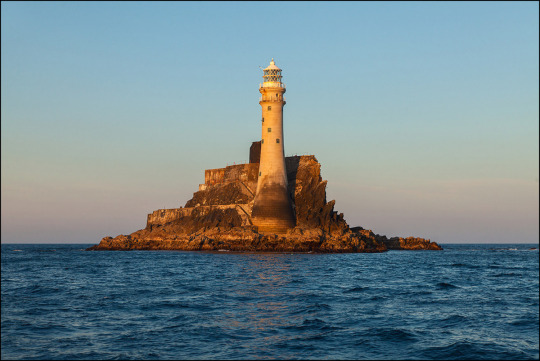
View On WordPress
#Cape Clear Island lighthouse#Crookhaven lighthouse#Fastnet Rock#Ireland#Old Head of Kinsale#Stephen Whitney Shipwreck#West Calf Island
5 notes
·
View notes
Photo

Fastnet Rock #irisharchitecture #lighthouse #sea #architecture #dramatic #scenic #seascape #fastnetrock #fastnet #ireland #irelandtravel #waves #ocean #rock #cliff #blackandwhitelandscape #blackandwhite @conor_english @willoyoung #capeclear #schull #travel #travelphotography
#rock#travelphotography#capeclear#sea#irelandtravel#blackandwhitelandscape#architecture#cliff#blackandwhite#dramatic#schull#irisharchitecture#ocean#waves#lighthouse#ireland#fastnetrock#fastnet#scenic#seascape#travel
2 notes
·
View notes
Photo

Highlights form the Fastnet Rock #rolexfastnetrace2021 . . . . Rambler | Skorpios | Mascsf | Maxi Edmond De Rothschild | Oromocto | Varuna | Stormvogel | Alivia | Rambler . . . @rorcracing #oceanracing #ocean @imocaglobeseries #maxiyachts #sunset #fastnetrace #ireland #yachtracing (at Fastnet Lighthouse) https://www.instagram.com/p/CSmgrTPqY_N/?utm_medium=tumblr
27 notes
·
View notes
Text
Fastnet Lighthouse: the story behind “Ireland’s Teardrop”
On a jagged tooth of shale rock a few miles off Ireland’s south coast, Fastnet Lighthouse is deserving of the utmost respect for its beauty, for its history, for the sheer danger of its location, and, basically, just for its existence, really.
Already getting close to it is a challenge, given its surrounding churning seas: if you wanted a more challenging location on which to build anything, it would be hard to come up with something more difficult.
On a jagged tooth of shale rock a few miles off Ireland’s south coast, Fastnet Lighthouse is deserving of the utmost respect for its beauty, for its history, for the sheer danger of its location, and, basically, just for its existence, really. Already getting close to it is a challenge, given its surrounding churning seas: if you wanted a more challenging location on which to build anything, it…

View On WordPress
#beacons#Europe#human#international#Ireland#lighthouses#lights#local history#monuments#nature#news#ocean#people#sea#stories#world
1 note
·
View note
Text
Events 11.10 (before 1950)
474 – Emperor Leo II dies after a reign of ten months. He is succeeded by his father Zeno, who becomes sole ruler of the Byzantine Empire. 937 – Ten Kingdoms: Li Bian usurps the throne and deposes Emperor Yang Pu. The Wu State is replaced by Li (now called "Xu Zhigao"), who becomes the first ruler of Southern Tang. 1202 – Fourth Crusade: Despite letters from Pope Innocent III forbidding it and threatening excommunication, Catholic crusaders begin a siege of Zara (now Zadar, Croatia). 1293 – Raden Wijaya is crowned as the first monarch of Majapahit kingdom of Java, taking the throne name Kertarajasa Jayawardhana. 1444 – Battle of Varna: The crusading forces of King Władysław III of Poland (aka Ulaszlo I of Hungary and Władysław III of Varna) are defeated by the Turks under Sultan Murad II and Władysław is killed. 1599 – Åbo Bloodbath: Fourteen noblemen who opposed Duke Charles were decapitated in the Old Great Square of Turku (Swedish: Åbo) for their involvement in the War against Sigismund and the related peasant revolt known as the Cudgel War. 1659 – Chattrapati Shivaji Maharaj, Maratha King kills Afzal Khan, Adilshahi in the battle popularly known as Battle of Pratapgarh. 1674 – Third Anglo-Dutch War: As provided in the Treaty of Westminster, Netherlands cedes New Netherland to England. 1702 – English colonists under the command of James Moore besiege Spanish St. Augustine during Queen Anne's War. 1766 – The last colonial governor of New Jersey, William Franklin, signs the charter of Queen's College (later renamed Rutgers University). 1775 – The United States Marine Corps is founded at Tun Tavern in Philadelphia by Samuel Nicholas. 1793 – A Goddess of Reason is proclaimed by the French Convention at the suggestion of Pierre Gaspard Chaumette. 1821 – Cry of Independence by Rufina Alfaro at La Villa de Los Santos, Panama setting into motion a revolt which led to Panama's independence from Spain and to it immediately becoming part of Colombia. 1847 – The passenger ship Stephen Whitney is wrecked in thick fog off the southern coast of Ireland, killing 92 of the 110 on board. The disaster results in the construction of the Fastnet Rock lighthouse. 1865 – Major Henry Wirz, the superintendent of a prison camp in Andersonville, Georgia, is hanged, becoming one of only three American Civil War soldiers executed for war crimes. 1871 – Henry Morton Stanley locates missing explorer and missionary, David Livingstone in Ujiji, near Lake Tanganyika, famously greeting him with the words, "Dr. Livingstone, I presume?". 1898 – Beginning of the Wilmington insurrection of 1898, the only instance of a municipal government being overthrown in United States history. 1910 – The date of Thomas A. Davis' opening of the San Diego Army and Navy Academy, although the official founding date is November 23, 1910. 1918 – The Western Union Cable Office in North Sydney, Nova Scotia, receives a top-secret coded message from Europe (that would be sent to Ottawa and Washington, D.C.) that said on November 11, 1918, all fighting would cease on land, sea and in the air. 1939 – Finnish author F. E. Sillanpää is awarded the Nobel Prize in Literature. 1940 – The 1940 Vrancea earthquake strikes Romania killing an estimated 1,000 and injuring approximately 4,000 more. 1942 – World War II: Germany invades Vichy France following French Admiral François Darlan's agreement to an armistice with the Allies in North Africa. 1944 – The ammunition ship USS Mount Hood explodes at Seeadler Harbour, Manus, Admiralty Islands, killing at least 432 and wounding 371. 1945 – Heavy fighting in Surabaya between Indonesian nationalists and returning colonialists after World War II, today celebrated as Heroes' Day (Hari Pahlawan). 1946 – A magnitude 6.9 earthquake in the Peruvian Andes mountains kills at least 1,400 people.
0 notes
Text
tagged by the lovely @gothyringwald <3
favourite colour: Dark green.
last song: A Message To My Future Self - JER
last movie: Apostle (2018) dir. Gareth Evans
watching:Bridgerton (finally!)
reading: Piranesi - Susanna Clarke, Paper Girls - Brian K Vaughan & Cliff Chiang, Seashaken Houses: A Lighthouse History from Eddystone to Fastnet - Tom Nancollas.
sweet, spicy, or savoury: Savoury
tea or coffee: Tea!
favourite drink: Tea or tap water.
Aaaaaaand I’m going to tag @old-long-john, @angst-wizard, @anyone else who wants to do it.
7 notes
·
View notes
Text


A small acrylic painting I made based on a photo i took last year of Fastnet Lighthouse. I thought something based on this lighthouse would work well with my theme as it is a man-made structure situated on a rock that is located out at sea.
The works of Vincent van Gogh and Paul Henry served as inspiration for some aspects of this piece.
2 notes
·
View notes